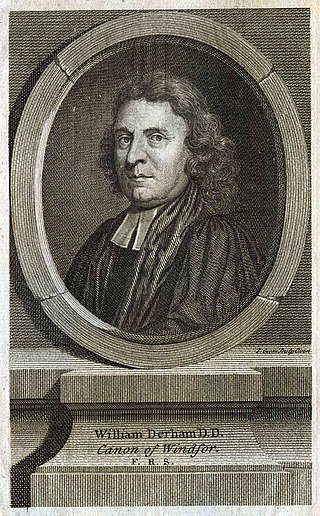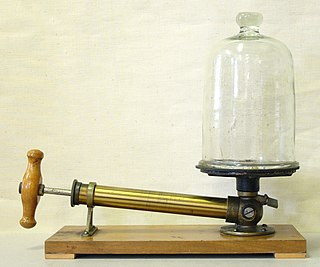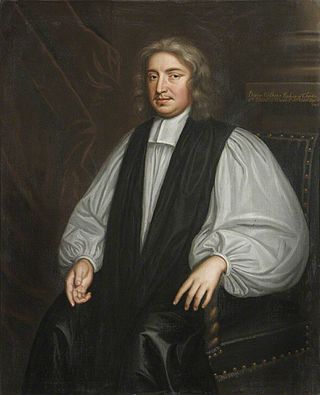Related Research Articles

John Ray FRS was a Christian English naturalist widely regarded as one of the earliest of the English parson-naturalists. Until 1670, he wrote his name as John Wray. From then on, he used 'Ray', after "having ascertained that such had been the practice of his family before him". He published important works on botany, zoology, and natural theology. His classification of plants in his Historia Plantarum, was an important step towards modern taxonomy. Ray rejected the system of dichotomous division by which species were classified by repeated sub-division into groups according to a pre-conceived series of characteristics they have or have not, and instead classified plants according to similarities and differences that emerged from observation. He was among the first to attempt a biological definition for the concept of species, as "a group of morphologically similar organisms arising from a common ancestor". Another significant contribution to taxonomy was his division of plants into those with two seedling leaves (dicotyledons) or only one (monocotyledons), a division used in taxonomy today.

Robert Hooke was an English polymath who was active as a physicist, astronomer, geologist, meteorologist and architect. He is credited as one of the first scientists to investigate living things at microscopic scale in 1665, using a compound microscope that he designed. Hooke was an impoverished scientific inquirer in young adulthood who went on to become one of the most important scientists of his time. After the Great Fire of London in 1666, Hooke attained wealth and esteem by performing more than half of the property line surveys and assisting with the city's rapid reconstruction. Often vilified by writers in the centuries after his death, his reputation was restored at the end of the twentieth century and he has been called "England's Leonardo [da Vinci]".

Robert Boyle was an Anglo-Irish natural philosopher, chemist, physicist, alchemist and inventor. Boyle is largely regarded today as the first modern chemist, and therefore one of the founders of modern chemistry, and one of the pioneers of modern experimental scientific method. He is best known for Boyle's law, which describes the inversely proportional relationship between the absolute pressure and volume of a gas, if the temperature is kept constant within a closed system. Among his works, The Sceptical Chymist is seen as a cornerstone book in the field of chemistry. He was a devout and pious Anglican and is noted for his writings in theology.

Sir Christopher WrenFRS was an English architect, astronomer, mathematician and physicist who was one of the most highly acclaimed architects in the history of England. Known for his work in the English Baroque style, he was accorded responsibility for rebuilding 52 churches in the City of London after the Great Fire in 1666, including what is regarded as his masterpiece, St Paul's Cathedral, on Ludgate Hill, completed in 1710.

Francis Willughby FRS was an English ornithologist, ichthyologist, mathematician and an early student of linguistics and games.
The year 1705 in science and technology involved some significant events.
The year 1662 in science and technology involved some significant events.
The year 1678 in science and technology involved some significant events.
The year 1676 in science and technology involved some significant events.
The year 1669 in science and technology involved some significant events.

William Derham FRS was an English clergyman, natural theologian, natural philosopher and scientist. He produced the earliest reasonably accurate measurement of the speed of sound.

A bell jar is a glass jar, similar in shape to a bell, and can be manufactured from a variety of materials. Bell jars are often used in laboratories to form and contain a vacuum. It is a common science apparatus used in experiments. Bell jars have a limited ability to create strong vacuums; vacuum chambers are available when higher performance is needed. They have been used to demonstrate the effect of vacuum on sound propagation.
Events from the year 1660 in England. This is the year of the Stuart Restoration.
Events from the year 1677 in England.

Ralph Bathurst, FRS was an English theologian and physician.

The Gresham College group was a loose collection of scientists in England of the 1640s and 1650s, a precursor to the Royal Society of London. Within a few years of the granting of a charter to the Royal Society in 1662, its earlier history was being written and its roots contested. There is still some debate about the effect of other groups on the way the Royal Society came into being. The composition of those other groups is unclear in parts; and the overall historiography of the early Royal Society is still often regarded as problematic. But this group has always been seen as fundamental to the course of events.

The Oxford Philosophical Club, also referred to as the "Oxford Circle", was to a group of natural philosophers, mathematicians, physicians, virtuosi and dilettanti gathering around John Wilkins FRS (1614–1672) at Oxford in the period 1649 to 1660. It is documented in particular by John Aubrey: he refers to it as an "experimental philosophical club" run weekly by Wilkins, who successfully bridged the political divide of the times. There is surviving evidence that the Club was formally constituted, and undertook some projects in Oxford libraries.
Frederick Slare or Slear (1647?–1727) was an English physician and chemist, a follower of Robert Boyle and Thomas Sydenham.
References
- ↑ Penguin Pocket On This Day. Penguin Reference Library. 2006. ISBN 0-14-102715-0.
- ↑ Egerton, Frank N. (October 2005). "A History of the Ecological Sciences, Part 18: John Ray and His Associates Francis Willughby and William Derham" (PDF). Bulletin of the Ecological Society of America: 301–313.
- ↑ Hooke, Robert (1678). Lectures De Potentia Restitutiva, or of Spring. Explaining the Power of Springing Bodies. London: The Royal Society.
- ↑ Beaart, Kees, ed. (2016). Johannes Goedaert: Fijnschilder en entomoloog (in Dutch). [Middelburg]: Nehalennia. ISBN 978-90-805985-6-0.